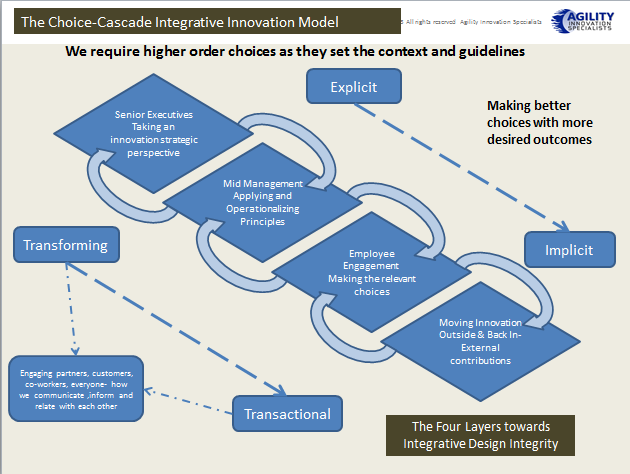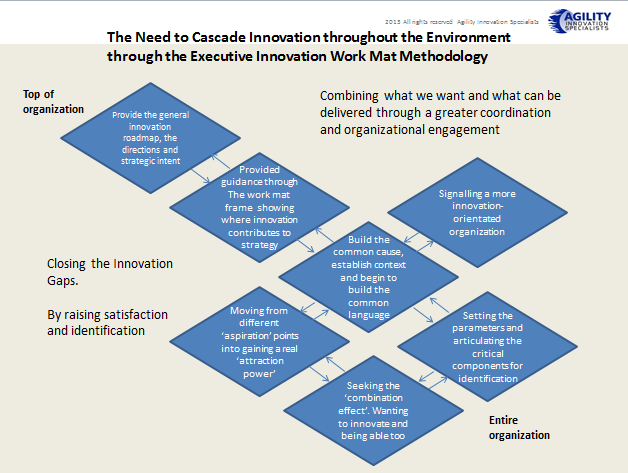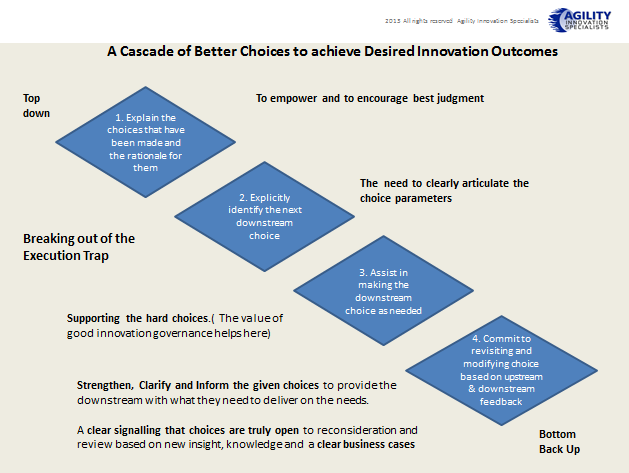It is not an easy job to achieve the level of consistent innovation expected within any organization. Often those breakthroughs never seem to be repeated, we struggle to understand the reasons why we can’t achieve that regular rhythm or dependable outcomes from the innovation portfolio, that we would have expected or the board demands.
If you ever look at high performance in sport it is in the consistent, hour-upon-hour, day-upon-day of dedicated practice, hard work and consistent honing that gets you to that performance point. You seek to reduce deviance; you look to achieve a certain consistency.
Business Organizations will like that approach, it ‘plays’ to the efficiency and effectiveness message, it offers up predictability and reliability that allows for dedicated planning and ‘predicting’ solid performance and certainly. This is ideal for those investors looking for consistency in results and dividends and the Executive Board yearns for.
Today uncertainly asks for a different performance
Today, we face a different type of performance – one that is not ‘just’ dependable but one that is often unpredictable, one that seems perhaps more suited to innovation that outsmarts others in unique ways.
We need to be predictable in performance but we need to deliver unpredictable innovation that wows our customers and the markets to achieve this. To do this you have to run today’s organizations faster, better, in more active and engaged ways to extract the best from it but to allow it to exploit options consistently and with clear purpose.
This engagement needs a different honing than most organizations are certainly not capable of delivering, without thinking long and hard about the way they must undertake a more transformational pathway. One that can connect and deliver a consistent and coherent innovating performance across the organization.
With so much around us, of unprecedented levels of disruption and uncertainly, unrelenting competitive pressure, fickle markets and customers, it creates either a ‘freezing at the top’, a paralysis-effect focusing just on short-term incremental measures or the “going for it” with huge ‘big bets’ that risk losing the whole farm. There must be better ways to manage in these times of uncertainty without having to choose one end of the spectrum or the other?
Managing innovation well is this middle way.
Innovation requires careful managing. I like to put the emphasis of innovation behind both efficiency in innovation and effectiveness in innovation. Innovation may never be simply predictable but it can be well-managed, to extract and leverage its best performance but to achieve this it needs a highly focused top management engagement. Often we are not seeing this in many organizations today.
You simply can’t delegate innovation down the organization. Innovation needs to be as aligned, as honed to strategy, to extracting from its available resources as anything else in organizations. It needs connecting, it needs articulating, it needs framing, it needs cascading throughout the organization.
We need to cascade innovation down the organization.
I believe there is an essential gap within the way we set about innovation today. There is a need for a well-articulated and well-communicated innovation strategy that can be delivered in an organizing framework that has been called the Executive Innovation Work Mat. Over a series of articles and blog posts I have laid out the Value Proposition for this.
In obtaining the right innovation engagement at the top of our organizations, well communicated throughout the entire company, we reduce distance and bridge many current disconnects surrounding innovation. We consistently raise performance.
Triggering the cascade-effect is seeking out broad adoption.
How do we achieve firstly, a change in performance that is both rapid but also one that works on consistently looking for improving performance over the longer-term? We need to think ‘velocity’ not only down organizations; we need to encourage this sense of movement in multiple directions, flowing back up organizations in knowledge and understanding with the ‘result’ of going out performing in greater successful innovations, time and again.
I’ve previously written on the cascading effect needed for innovation success looking at two-way flows and the value of closer alignment.
I want to go one step further in THREE VISUAL CASCADING steps
We need to achieve alignment, all sorts of alignment. We need to convey throughout the organization and encourage a closer alignment on not just what to do but also to support the how to do it as well as the where to do it.

We need to leverage across the entire ecosystem that makes up the organizations place where we consciously work on immediate impact points in this year’s innovation outcomes but also what is going to give us this longer-term transformational effect.
This requires a huge emphasis on collaborative efforts, on promoting behaviours and matching understanding within a greater transparent organization climate and culture.
We need to find more fluid and flexible organizations that respond through searching for innovation consistency. They need to have a ‘flow’ of knowledge, of clarity, of a sense of scale in their learning and dialogues that promotes greater successful innovation outcomes as the sense of on-going mission.
We need to align, offer clear vision and purpose and this needs orchestrating from the top of the organization to the bottom. Organizations need an integrated innovation strategic framework that can deliver commonality in understanding, in purpose, in language. We need to cascade.

What we are looking for is a cascade of better choices to achieve the desired innovation outcomes that only an integrated innovation design can achieve. This is where the engagement from the top of the organization becomes pivotal. They ‘frame’ the design; they offer the alignment and integrated approach I believe the Executive Innovation Work Mat methodology can provide.

The work mats aim is to engage the top of our organizations to lay out the conditions and result impact they expected from innovation. Then it needs to be cascaded throughout the organization.
Through this cascading-effect you move closer to better choices that can get so much closer to the desired innovation outcomes all involved want to seek out.
A performance that reflects a team’s or organizations best efforts to be best at what they do; the outstanding innovation performance consistent to the needs and growth expectations demanded in today’s constantly changing world.
Where consistency needs to be fluid, flexible, aligned and agile in innovation – that’s the new target performance standard needed.
Innovation can be broadly defined as In + ovation. that means if I can pay respect to my own thoughts, than only I can share them among my peers because those become rational. Through exchange of views and ideas innovations can be carried out.